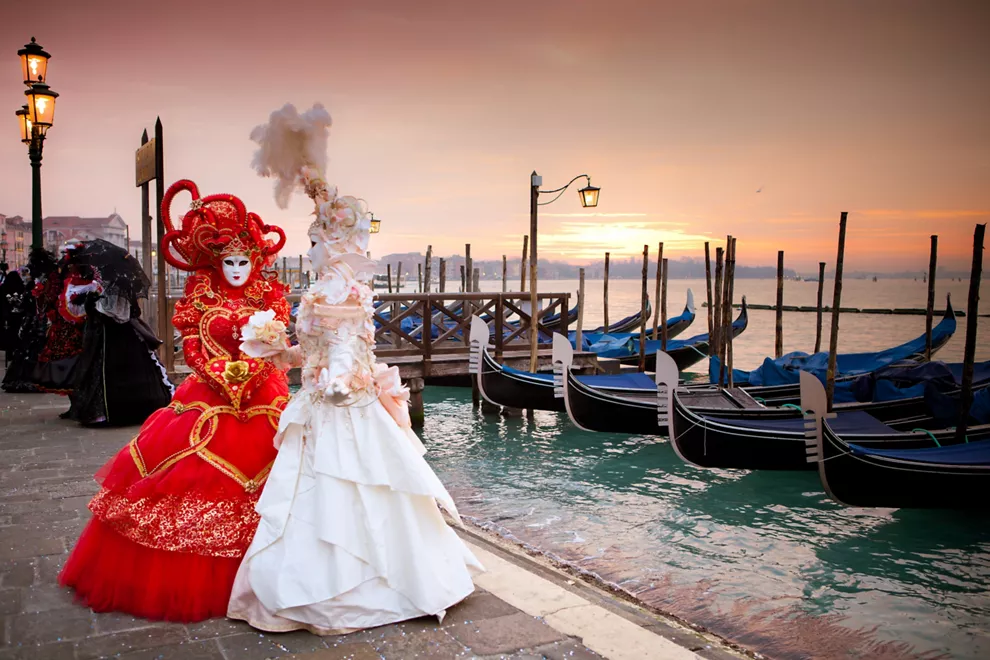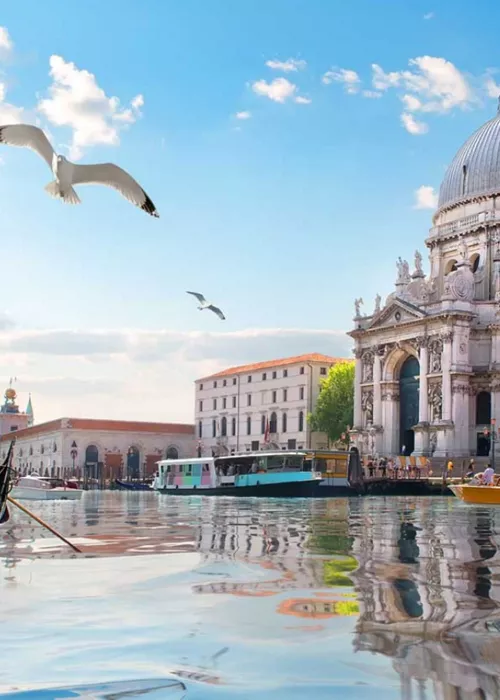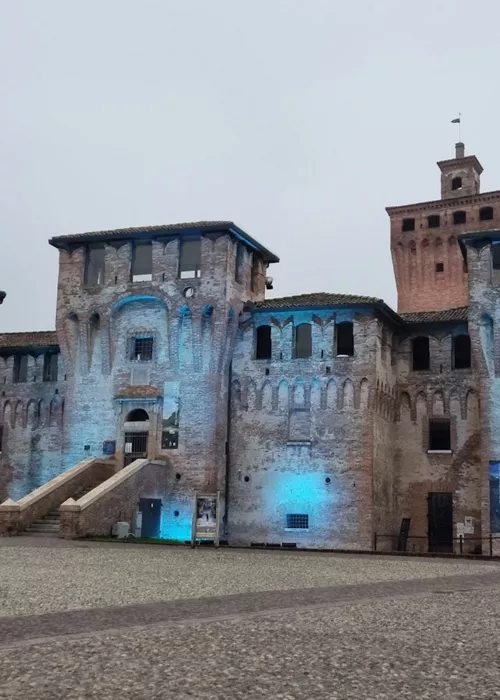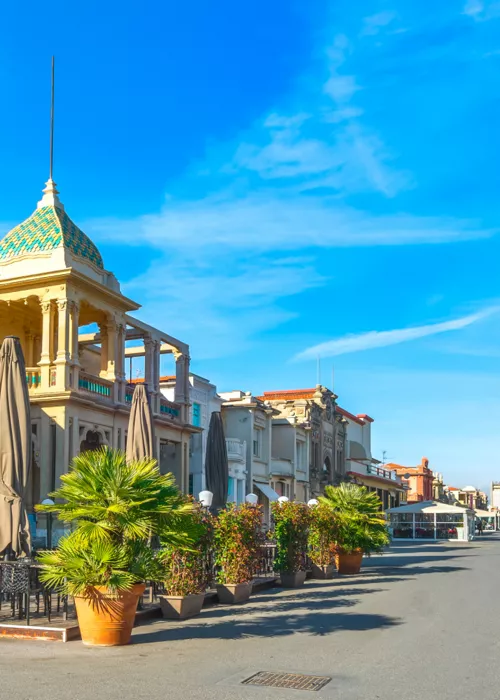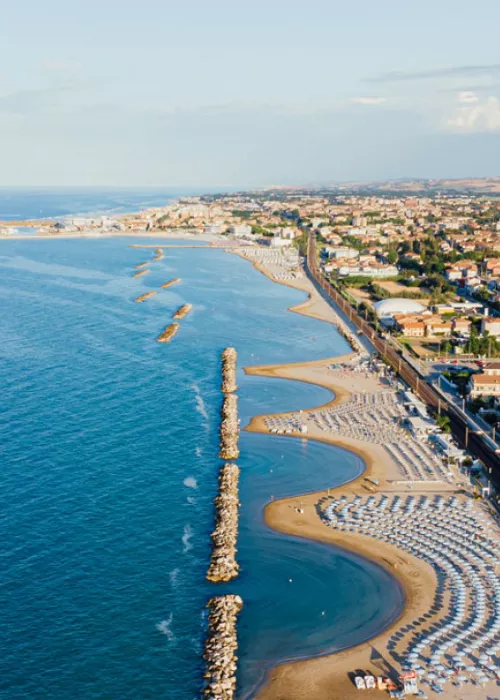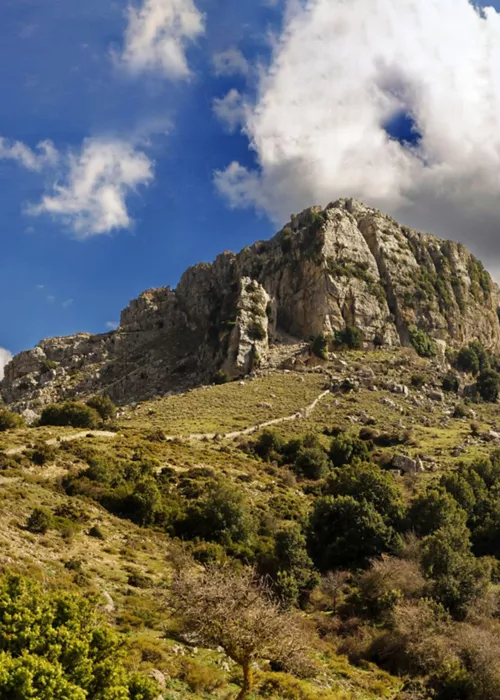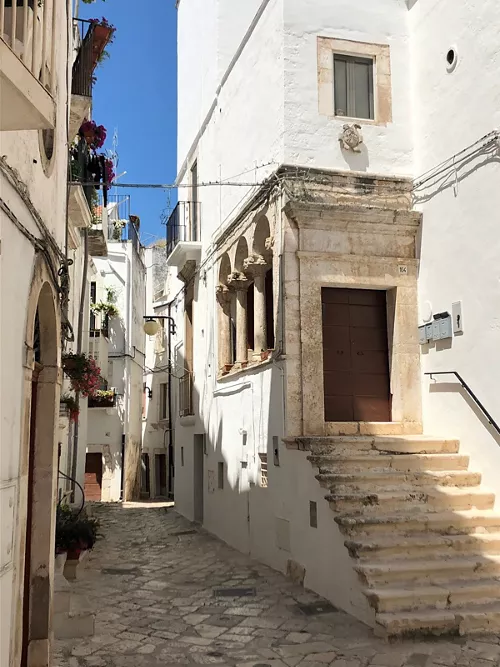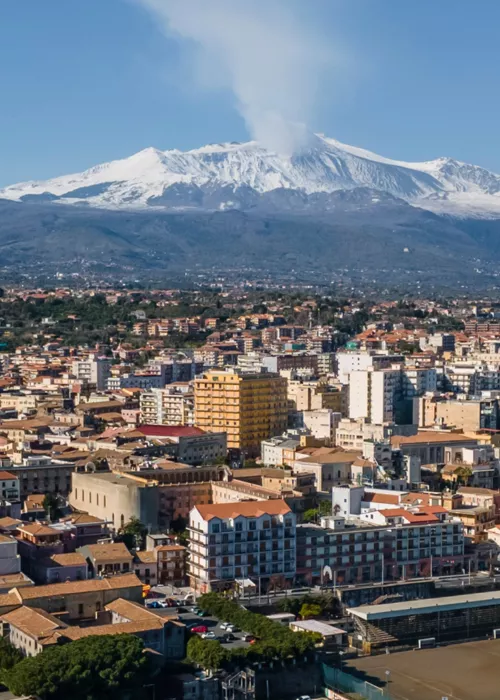Masks, flavours and colours light up Carnival all over Italy
4 minutes
Index
Carnival - a festival rooted in the mists of time - is a chance to set the imagination and creativity free from North to South, in keeping with ancient traditions or even with new and unexpected variations. Choose your mask: let the dance begin!
Masks among calli and canals: the Carnival of Venice
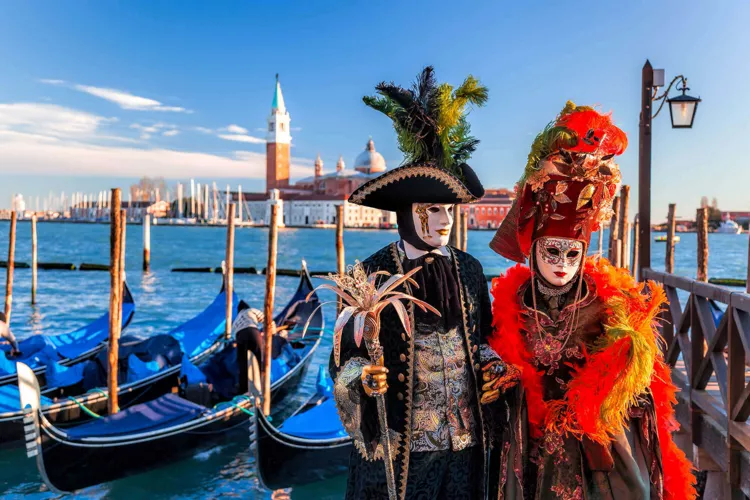
One of the most famous in the world, every year the Carnival of Venice attracts hordes of tourists and onlookers curious to admire in person St Mark's Square, the canals and calli of Venice animated by the colors and effects created by the participants’ elegant masks and costumes. With very ancient origins (it was in fact first mentioned in a document dating back to as early as 1094), the emblem of the Carnival of Venice is the mask, behind which the citizens of La Serenissima could conceal their identity and eliminate any social differences. There are many events and celebrations on the agenda, from the famous Flight of the Angel from St Mark's Bell Tower to the historical reenactment of the “Festa delle Marie” and “Svolo del Leon”, a tribute to the winged lion of Saint Mark, symbol of Venice, as well as masked parades and competitions for the most beautiful mask, boat parades, galas and DJ sets, concerts and food & wine stalls.
Carnival flavoured with oranges: the rite of Ivrea
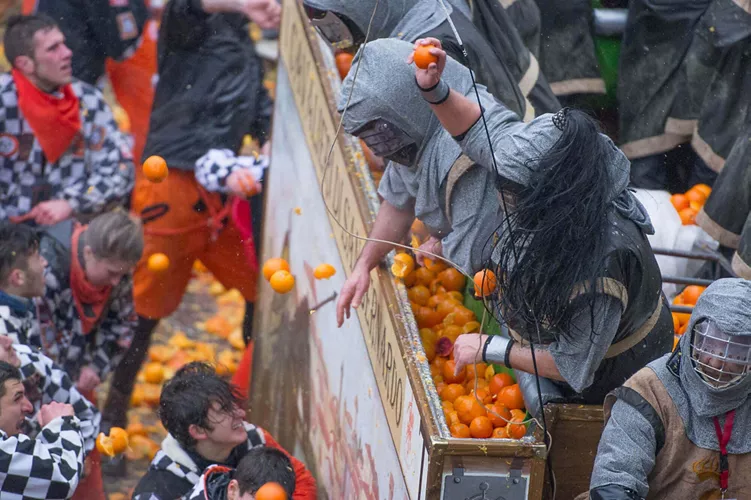
One of the most original, folk celebrations in Italy is the celebration of the Historic Carnival of Ivrea, in Piedmont, one of a kind because of the sensational “Battle of the Oranges”: a medieval reenactment staged in the three days around Mardi Gras that revokes the battle between the aranceri a piedi (orange handlers on foot), who represent the population, and the tiratori di arance (orange shooters riding in carts), who parade the streets of the city aboard horse-drawn carriages, representing the tyrant. But the rituals of the Carnival of Ivrea include many other events too: the wide range of historical reenactments also includes the bonfire of “Abbruciamento dello Scarlo”, the “Alzata degli Abbà” and the much-awaited presentation of the Mugnaia. A key element of the Carnival of Ivrea is a red cap: a mandatory accessory that will prevent you from being mistaken for an aranciere and ensure you are not battered with oranges.
Arts and crafts on centre stage: Cento Carnival
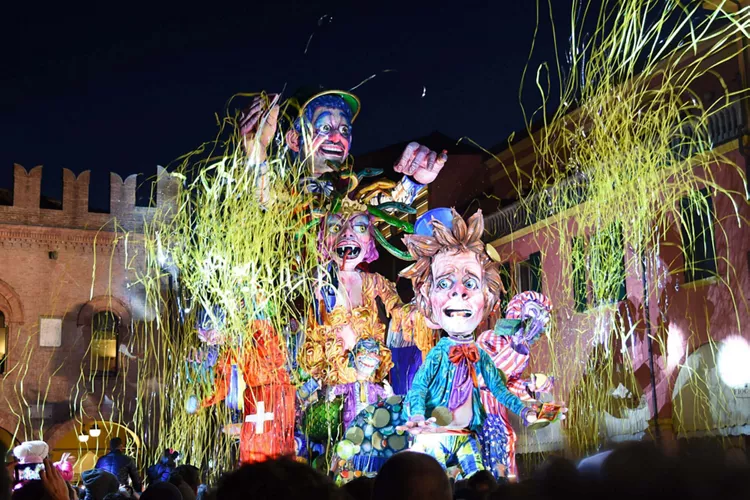
Dedicated to the arts, crafts and traditions of the city, with very ancient origins and twinned with no less than the Rio Carnival, the Carnival of Cento, in the province of Ferrara, stands out for its tradition of the gettito: a parade in which characters, on carnival floats take to the city streets, throwing gadgets and various items like inflatable balloons and cuddly toys to the crowd. The focus of the festival is Piazza Guercino, where Tasi, the characteristic local character, is burnt at the stake. In addition to the float parade with masked characters who parade individually and in groups, a series of concerts, performances by Brazilian dancers and sports, cultural and food events are also staged.
Viareggio Carnival: masks and papier-mâché along the seafront
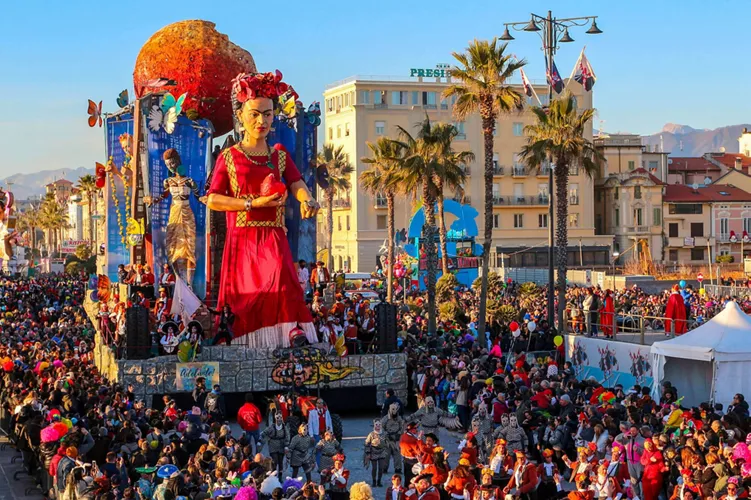
With a tradition dating back to 1873, the Carnival of Viareggio is among the most famous international carnivals thanks to its huge, sensational carnival floats, the result of the efforts of over 1,000 workers from more than 25 companies: made of papier-mâché, the floats and their enormous cardboard caricatures offer a satirical take on contemporary issues representing politicians and celebrities. In addition to the parades on the seafront in Viareggio, the whole Carnival period will be accompanied by local festivals, guided tours, workshops and a night parade, to celebrate Shrove Thursday.
Fano Carnival: the oldest and sweetest in Italy
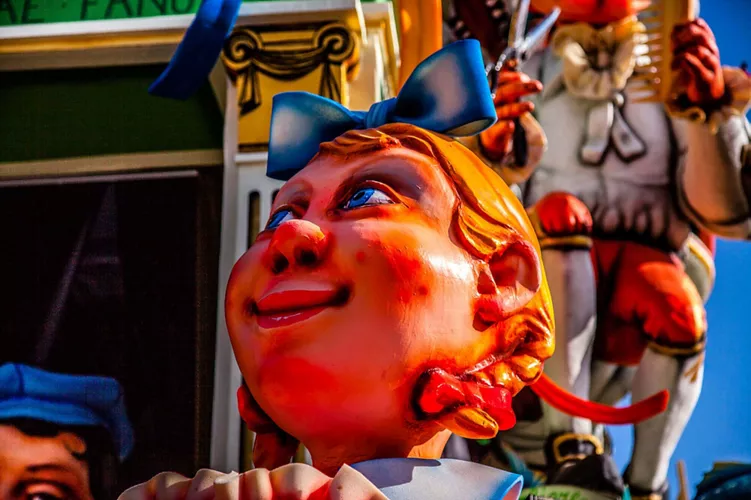
Together with Venice, it is considered the oldest Italian Carnival (the first document that certifies its origin dates to 1347): the Carnival of Fano, in the Marche region, stands out for its creative allegorical carnival floats and for the getto. During the parades held on the three Sundays before Mardi Gras, kilos of candy, chocolates and other treats are rained on to the watching crowds, rather than confetti. The floats of the Carnival of Fano can reach up to 16 meters in height, are illuminated by a myriad of lights and accompanied by musica arambita (angry music in the local dialect), that is, an odd group of musicians playing makeshift objects. The parade is headed by Vulon, the local masked character.
Between folklore and tradition: the Carnival of Mamoiada
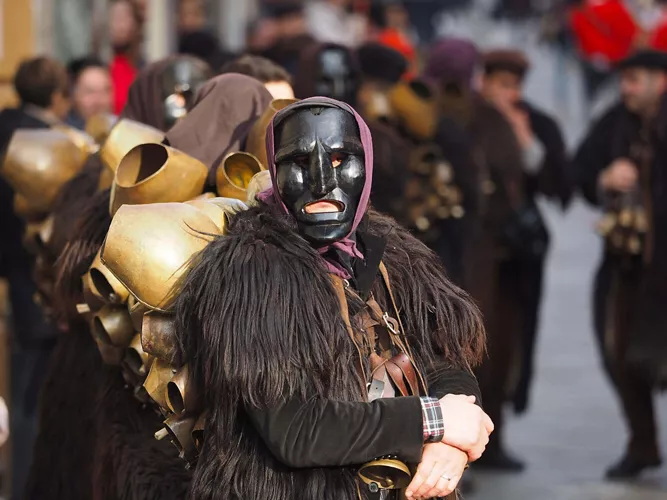
In Sardinia, there is a very unusual Carnival: the Carnival of Mamoiada, in the province of Nuoro. This is a mysterious, ancestral carnival festival not featuring carnival floats but instead original folk masks: Issohadores, with his traditional hat, white mask, red waistcoat, white trousers, shawl, rattles and a rope, and the Mamuthones, wearing sheepskins and wooden masks, who walk slowly, curved under the weight of 30 kg of bells. The main event of this Carnival is the parade, during which the Issohadores characters escort the Mamuthones and ”catch” the spectators with their ropes.
Among the first in the world: Putignano Carnival
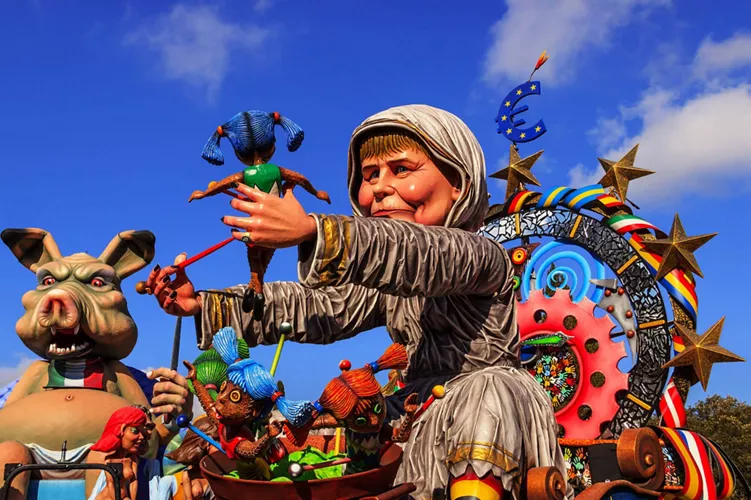
The Carnival of Putignano, in Puglia, mixes ancestral traditions and contemporary creations, with sensational carnival floats made by papier-mâché masters renowned worldwide. The celebrations start on 17 January, the festival of San’Antonio Abate, and take place every Thursday, with each Thursday dedicated to a different category (the Thursday of Monsignori, Priests, Nuns, Widows, Mad People, Wives, until the Thursday of the Cuckolded, when the entertaining horn-cutting ritual takes place). The traditional masked character is Farinella, whose name comes from one of the best-loved dishes of the local cuisine.
Lights and flowers at Acireale Carnival
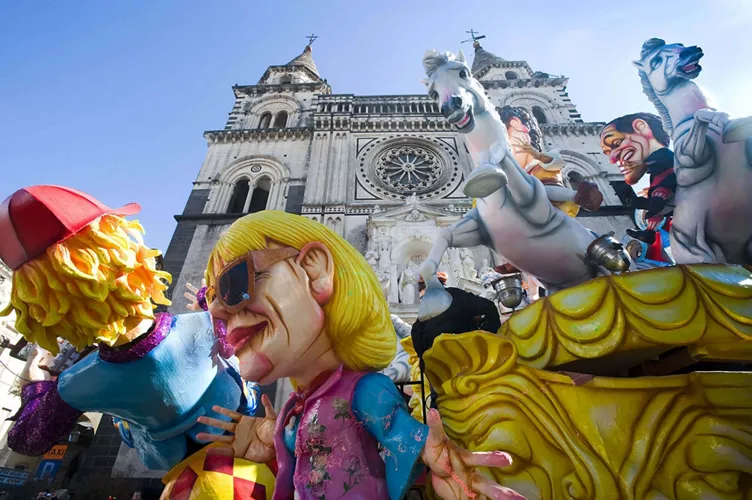
Finally, the Carnival of Acireale is the most famous in all of Sicily, a historic event full of colors and music dating back to the 16th century, when a battle with oranges and lemons was traditionally held (later banned). Masked characters and papier-mâché floats parade through the streets of the amazing Baroque center of Acireale. Gigantic grotesque carnival floats equipped with sophisticated mechanical movements and lights parading alongside floats entirely made with fresh flowers and miniature floats, often miniature versions of the allegorical ones, in a veritable triumph of lights and colors.

